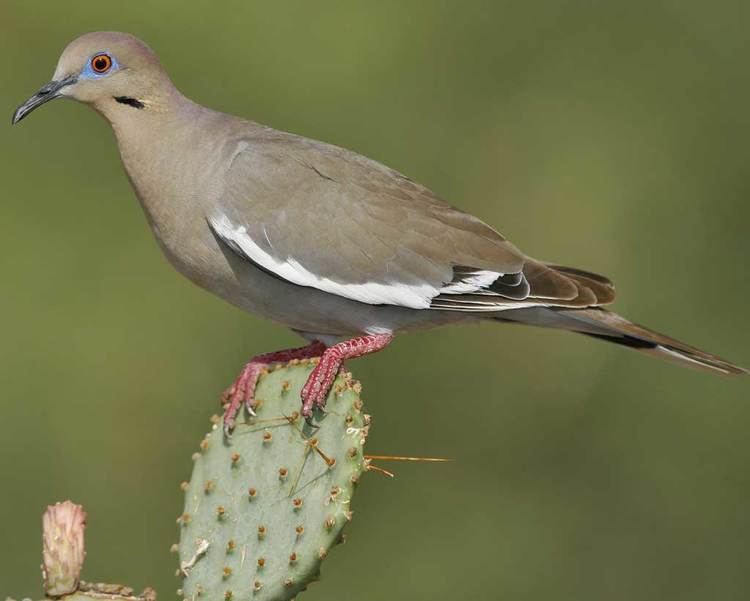Order Columbiformes | Phylum Chordata Family Columbidae Scientific name Zenaida asiatica Rank Species | |
 | ||
Similar Pigeons and doves, Bird, Zenaida doves, Mourning dove, Common ground dove | ||
The white-winged dove (Zenaida asiatica) is a dove whose native range extends from the south-western United States through Mexico, Central America, and the Caribbean. In recent years with increasing urbanization and backyard feeding, it has expanded throughout Texas, into Oklahoma, Louisiana and coastal Mississippi. It has also been introduced to Florida.
Contents
The white-winged dove is expanding outside of its historic range into Kansas, Arkansas, Oklahoma, and northern New Mexico. The dove's range has even expanded drastically northward into Canada. While the dove was introduced to Alberta, it still remains a common spring and summer visitor in Southern Alberta and Saskatchewan.
Description
White-winged doves are large, plump doves at 29 cm (11 in). They are brownish-gray above and gray below, with a bold white wing patch that appears as a brilliant white crescent in flight and is also visible at rest. Adults have a patch of blue, featherless skin around each eye and a long, dark mark on the lower face. Their eyes are bright crimson. The sexes are similar, but juveniles are more brown than adults. They have a blue eye ring and their legs and feet are brighter pink/red. Young also have brown eyes. Males have a slight iridescent sheen on their heads.
Behavior
The cooing calls is hoo, hoo, hoo-hoo. A drawn-out "hoo-a" sound is used to tell others about the presence of a predator. To impress females, males circle them with tail spread and wings raised. Males and females work together in raising the young. While calling, the tail flares. Families and nestmates often stay together for life, perching and foraging together.
Ecology
Some populations of white-winged doves are migratory, wintering in Mexico and Central America. They are year round inhabitants in Texas. San Antonio, Texas, had a year round population of over a million doves in 2001. The white-winged dove inhabits scrub, woodlands, desert, urban, and cultivated areas. It builds a flimsy stick nest in a tree of any kind and lays two cream-colored to white, unmarked eggs. One chick often hatches earlier and stronger, and so will demand the most food from the parents. A dove may nest as soon as 2–3 months after leaving the nest, making use of summer heat. The dove will nest as long as there is food and enough warmth to keep fledglings warm. In Texas, they nest well into late August.
White-winged doves feed on a variety of seeds, grains, and fruits. Western white-winged doves (Zenaida asiatica mearnsii) migrate into the Sonoran Desert to breed during the hottest time of the year because they feed on pollen and nectar, and later on the fruits and seeds of the saguaro cactus. They also visit feeders, eating the food dropped on the ground. Cracked corn is a favorite of doves. This gregarious species can be an agricultural pest, descending on grain crops in large flocks. It is also a popular gamebird in areas of high population.
